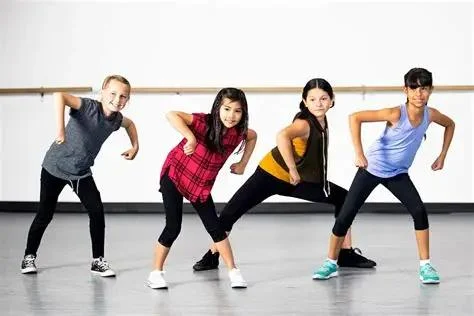
- understanding-dance-exergames-in-schools
- the-link-between-physical-activity-and-student-health
- can-dance-exergames-boost-physical-activity-as-a-school-based-intervention
- real-school-implementations-of-dance-exergames
- how-to-integrate-dance-exergames-effectively
- long-term-benefits-and-the-role-of-experts
1. Understanding Dance Exergames in Schools
Dance exergames—video games that combine movement, rhythm, and dance—are increasingly being considered as innovative tools in physical education programs. These interactive platforms, such as Just Dance or Dance Dance Revolution, motivate students to engage in aerobic movement through technology they find enjoyable and familiar. In school environments, where engagement in traditional PE can vary, dance exergames provide a dynamic, inclusive alternative that appeals across demographics.
2. The Link Between Physical Activity and Student Health
Numerous studies have shown that physical activity is crucial for children's physical, mental, and academic development. However, many schools report declining participation in physical activity, particularly among middle school students. Screen time often gets the blame—but what if we flipped the narrative and used screen-based games to promote healthy movement? That's where dance exergames shine.
By leveraging students’ love of digital media, these tools can help increase heart rate, enhance coordination, and even promote self-esteem—all within the comfort and safety of a classroom or gymnasium.
3. Can Dance Exergames Boost Physical Activity as a School-Based Intervention?
The short answer is yes—and the evidence is growing. Implementing dance exergames as part of a school-based intervention has proven successful in several pilot programs across the U.S. and Europe. These games can increase students’ moderate-to-vigorous physical activity (MVPA) levels to meet or even exceed national PE standards.
What makes this method especially appealing is its versatility. Dance exergames require little space, can be adjusted for different skill levels, and are ideal for schools with limited access to athletic facilities. Plus, they're fun—making it more likely that students will want to participate voluntarily.
4. Real School Implementations of Dance Exergames
At Lincoln Middle School in Ohio, the PE department introduced a weekly exergaming session using dance platforms. Within three months, teacher-reported engagement rose by 40%. One student, Maya, who used to avoid PE, said, “I actually look forward to gym now because I feel like I’m playing, not exercising.”
In the UK, a program called “Move it Monday” integrated dance exergames into homeroom periods. The result? Teachers observed better focus in morning classes and fewer behavioral issues post-activity. These success stories support the claim that dance exergames can transform PE and contribute meaningfully to school wellness goals.
5. How to Integrate Dance Exergames Effectively
To be effective, schools must approach implementation thoughtfully:
- Equipment: Invest in consoles, screens, and reliable dance game titles.
- Curriculum Integration: Align games with fitness benchmarks or weekly PE goals.
- Teacher Training: Educators must feel confident in facilitating gameplay and monitoring safety.
- Inclusivity: Select games that feature diverse music, avatars, and cultural themes to engage a wide range of students.
For schools unsure where to begin, American Dance Academy offers consulting services and product recommendations tailored for school-based dance integration.
6. Long-Term Benefits and the Role of Experts
More than just a passing trend, dance exergames could be a strategic part of modern physical education. When implemented consistently, they may help combat childhood obesity, improve cardiovascular fitness, and build positive associations with physical activity that last into adulthood.
Experts in childhood education and physical therapy are increasingly recognizing the potential of gamified movement. When combined with traditional fitness approaches, exergaming can contribute to a holistic student wellness model that values both fun and function.
Ultimately, whether used once a week or every day, dance exergames are proving to be more than entertainment—they’re becoming evidence-based interventions that engage, motivate, and move today’s students in meaningful ways.


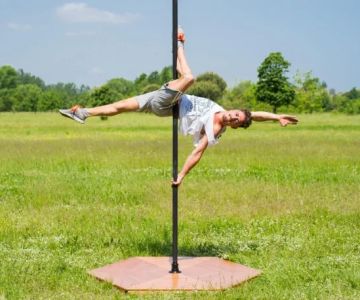
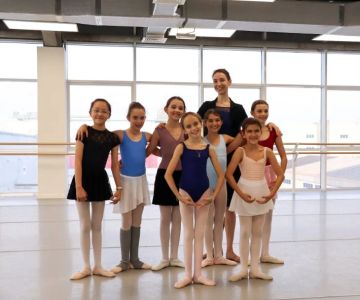


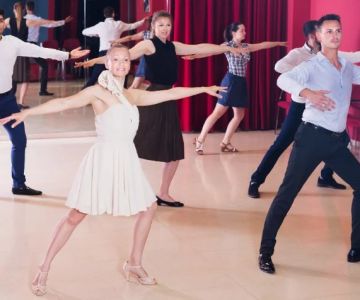
 Barrington Dance Academy5.0 (22 reviews)
Barrington Dance Academy5.0 (22 reviews) Canyon Concert Ballet4.0 (17 reviews)
Canyon Concert Ballet4.0 (17 reviews) Big City Dance Center LLC4.0 (25 reviews)
Big City Dance Center LLC4.0 (25 reviews) Tye Chua Dance & Kalamazoo Ballet5.0 (18 reviews)
Tye Chua Dance & Kalamazoo Ballet5.0 (18 reviews) Fenton Ballet Theatre4.0 (24 reviews)
Fenton Ballet Theatre4.0 (24 reviews) Front Street Dance Center5.0 (7 reviews)
Front Street Dance Center5.0 (7 reviews) Are There Dances in Middle School? What Students and Parents Should Know
Are There Dances in Middle School? What Students and Parents Should Know How a Dance School in Instagram Builds Community and Success
How a Dance School in Instagram Builds Community and Success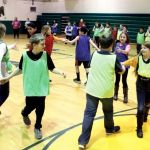 Why Do Schools Teach Square Dancing?
Why Do Schools Teach Square Dancing?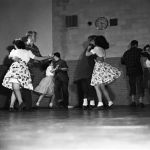 Why Was Square Dancing Taught in School?
Why Was Square Dancing Taught in School? Why Swing Dance Is Popular for Adults
Why Swing Dance Is Popular for Adults A School Dance: How to Prepare, Shine, and Make It Unforgettable
A School Dance: How to Prepare, Shine, and Make It Unforgettable